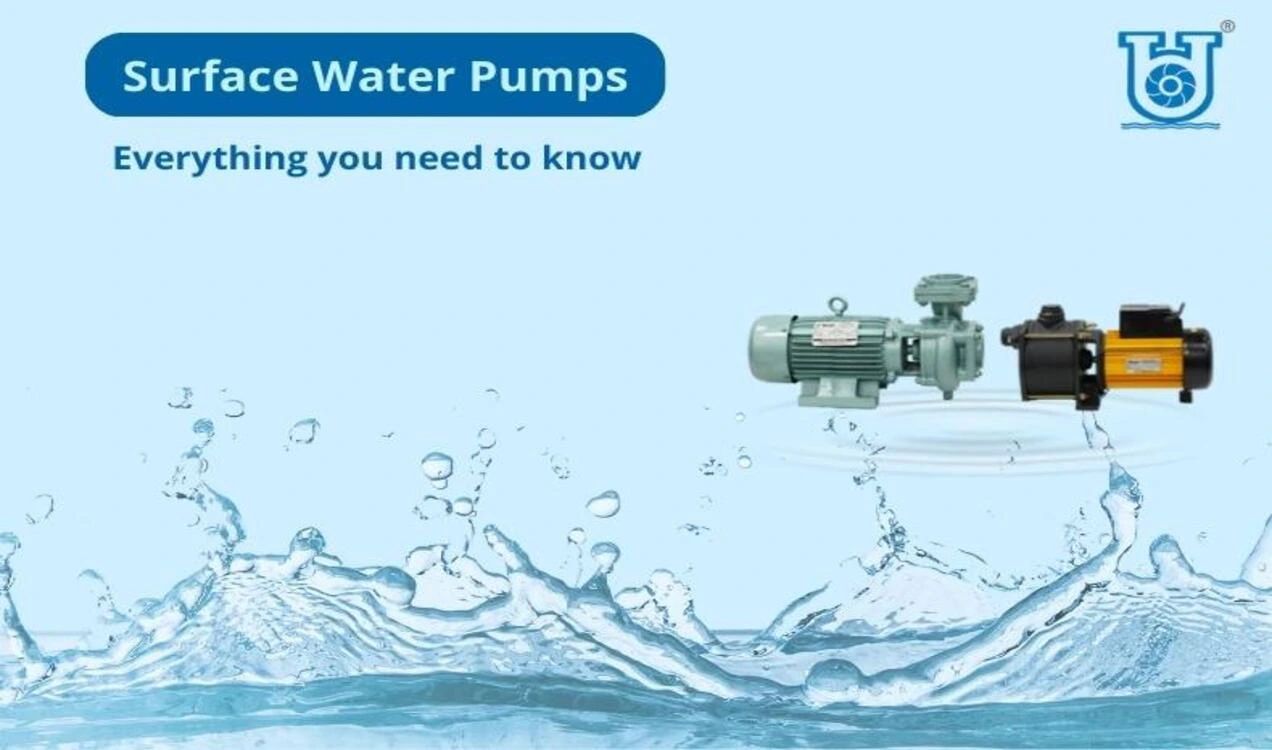Surface water pumps are a key component of many water delivery systems, enabling efficient and effective transportation of water from lakes, rivers, and other surface sources. Whether for agricultural irrigation, household, and commercial water supply, or pond and fountain circulation, surface water pumps play a key role in numerous water pumping applications.
In this blog, we will cover everything you need to know about surface water pumps, including their sorts, uses, components to consider when selecting a pump, installation, and maintenance advice, and safety issues.
What are surface water pumps?
A specified zone is supplied by surface water pumps, which carry water from surface sources including lakes, rivers, and reservoirs. When the water source, such as a lake or river, is situated above the pump, they are typically utilised. Centrifugal, jet, and submersible pumps are the three basic forms of surface water pumps. Jet pumps exploit a mix of suction and pressure to move water, as opposed to centrifugal pumps, which utilise a revolving impeller to generate a flow of water. A motor powers the impeller of a submersible pump, which is meant to be entirely immersed in water.
Surface water pumps are intended for sources of superficial or surface water as opposed to other kinds of pumps, including excellent deep pumps. A deep well pump, on the other hand, is intended to take water from subterranean sources like wells.
Uses of surface water pumps:
Surface water turbines are utilised for a number of applications, such as:
Agriculture:
Surface water conduits are frequently utilised in agriculture to transfer water for crops irrigation. In order to successfully irrigate their crops without depending on groundwater sources, farmers may employ them to bring water from neighbouring rivers or lakes to irrigation systems.
Residential and commercial:
Water supply systems for distributing water to houses and companies also make use of surface water pumps. They may be used to syphon water from bodies of water on the surface, such as lakes, rivers, or other bodies of water, to a facility for treatment before it is given to houses and enterprises.
Circulation of ponds and fountains:
Surface water turbines are widely utilised in the maintenance of ponds and fountains. They may be used to circulate water and minimise stagnation, which might foster the development of algae and other undesirable animals.
Fire safety:
Surface water pumps are utilised in fire safety systems to transport water from adjacent sources to fire hydrants or sprinklers.
Factors to consider when buying surface water pump:
In order to guarantee that you purchase the suitable surface water pump for your water pumping application, there are numerous aspects to consider. The following are included in these requirements:
- The discharge rate and pressure requirements for your application will define the size and horsepower of the pump you need. Gallons per minute (GPM) is used to measure flow rate, while pounds per square inch (PSI) is used to measure pressure.
- The pump’s specifications like pump size and horsepower should be changed to fit the needs of the application for discharge rate and pressure. A pump that is too huge will waste energy and cost more, but a pump that is too tiny won’t be able to provide you with enough water.
- The structure and material of the pump are crucial concerns because they effect its durability and lifetime. Pumps may be built of plastic or metal; some are composed of plastic. Some compressors are built for heavy-duty reasons, while others are better ideal for lighter applications.
- Cost-effectiveness and energy efficiency are major concerns when choosing a surface water pump. Look for pumps that have a high-efficiency rating or are Energy Star certified. Throughout the pump’s lifetime, a more efficient pump will help you to minimise your energy expenditures.
Installation and maintenance of surface water pumps:
Proper installation and maintenance are vital for the safe and successful working of surface water pumps. Here are some guidelines for installing and maintaining your pump:
- Correct installation procedures: Follow the manufacturer’s instructions for installing your pump, including correct wiring, grounding, and piping. Make sure the pump is installed on a level surface and that it is securely secured to prevent movement.
- Routine maintenance tasks: Regular maintenance is necessary to preserve your pump running efficiently. This comprises processes such as cleaning the pump and impeller, checking for leaks, lubricating moving parts, and examining electrical components.
- Troubleshooting significant issues: If your pump is not operating correctly, there are various typical problems to look for, including low pressure, overheating, and blockages in the impeller or conduit. Consult the manufacturer’s instructions or a professional pump technician for troubleshooting advice.
Safety concerns for operating surface water pumps:
Using a surface water pump may be hazardous if necessary safety practises are not done. Here are some safety considerations to have in mind when running a surface water pump:
- Electrical hazards: Follow suitable wiring and grounding precautions to avoid electrical shock.
- Chemical hazards: Use proper safety precautions to avoid exposure to pesticides and fertilizers.
- Physical hazards: Always turn off and disconnect the pump before doing maintenance or repairs, and wear suitable personal protective equipment.
- High-pressure hazards: Follow the manufacturer’s instructions for secure operation and employ suitable pressure release valves if necessary.
- Training and education: Ensure adequate training and teaching before installing surface water pumps to guarantee safe operation.
Conclusion:
Surface water pumps are a key component of many water delivery systems, providing efficient and effective conveyance of water from surface sources. When choosing and employing a surface water pump, it is vital to consider elements such as discharge rate, pump size and horsepower, and energy efficiency.
Proper installation and maintenance are also important to guarantee the safe and effective running of the pump. By following simple safety measures, you may operate your surface water pump safely and effectively for years to come.


